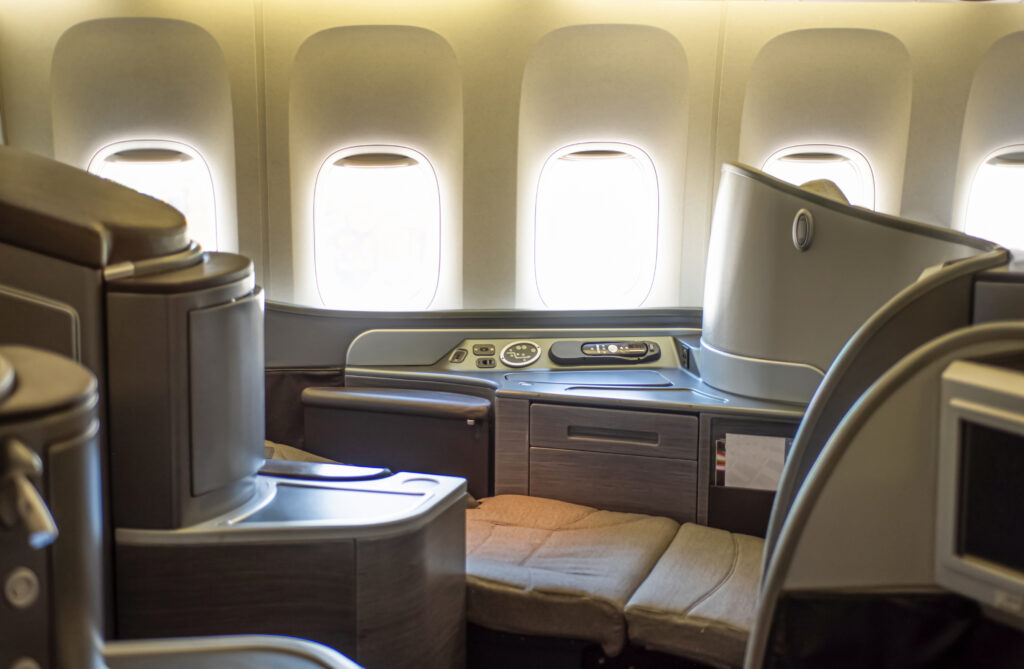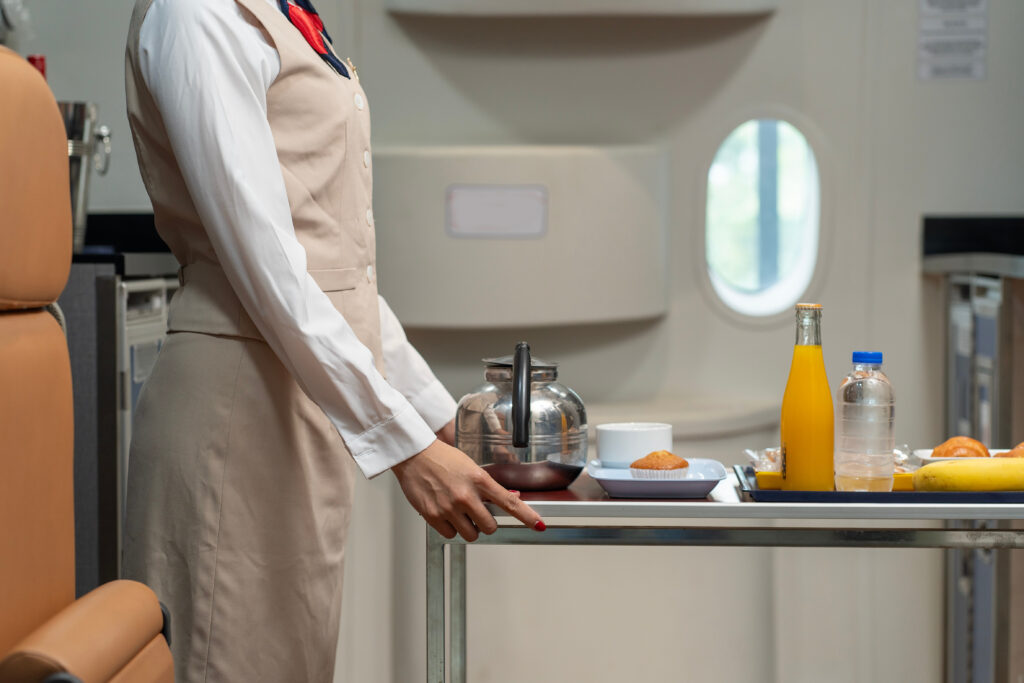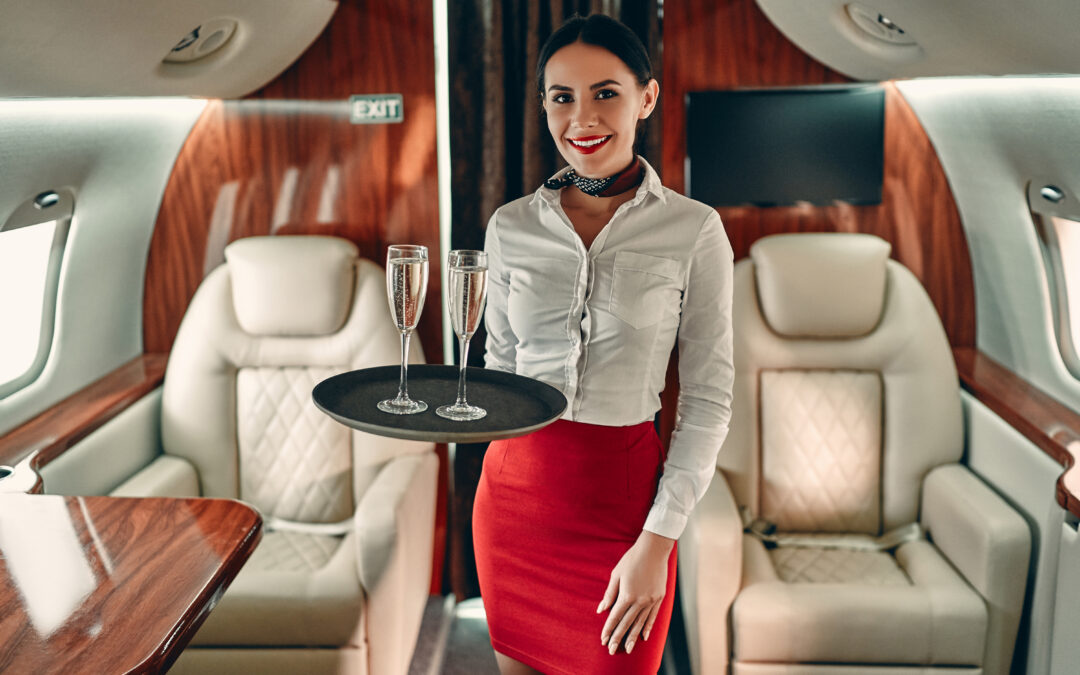You see them demonstrating safety procedures, serving drinks, and smiling through turbulence. But flight attendants do far more than you realize, and most of it happens out of sight. From secret sleeping quarters to security protocols passengers never notice, here’s what really goes on at 35,000 feet.
They’re Sizing You Up at the Door
That warm greeting when you board isn’t just pleasantry. Flight attendants are conducting rapid security assessments of every passenger. They’re noting who seems intoxicated, agitated, or potentially problematic. They’re identifying able-bodied passengers who could help in emergencies. They’re watching for suspicious behavior or concerning interactions.
This screening continues throughout boarding. Are you traveling alone? How are you dressed? Do you seem nervous? Are you paying unusual attention to exits or crew movements? Flight attendants receive extensive security training and are often the first line of defense in identifying threats before doors close.
They’re also mentally cataloging which passengers will need extra assistance, who has children, who speaks English, and who might be traveling with a service animal or medical equipment. All this happens in seconds as you walk past that smile.
The Secret Rest Areas You’ve Never Seen
On long-haul flights, crew members need rest just like passengers. But they’re not cramming into economy seats. Hidden rest compartments exist on many wide-body aircraft, accessed through unmarked doors or ceiling hatches you’ve probably never noticed. These areas contain bunk beds, sometimes with individual reading lights, entertainment systems, and climate controls.
The location varies by aircraft. On Boeing 777s and 787s, crew rest areas are often above the passenger cabin, accessed via staircases hidden behind what looks like closet doors. On Airbus A350s and A380s, they might be below the main deck. These compartments are surprisingly comfortable, designed for crew to sleep during designated rest periods on ultra-long flights.
Flight attendants work in shifts on long flights, rotating through service periods and rest times. While some crew members serve passengers, others are quite literally sleeping a few feet above your head.

Safety Is Everything (Even When It Looks Like Nothing)
Every action flight attendants take relates to safety, even when it seems arbitrary. Asking you to put your seat back up for landing? Your exit row might need that space. Dimming cabin lights during night takeoffs and landings? It helps your eyes adjust so you can see in the dark if there’s an emergency evacuation.
Insisting your bag fits under the seat in front of you? A bag in the aisle becomes a tripping hazard during evacuation. Wanting your window shade up during critical phases of flight? Crew and passengers need to see outside if there’s fire or other problems.
They’re constantly monitoring the cabin. Who’s in the lavatories and for how long? Are passengers moving around during turbulence? Is anyone tampering with smoke detectors? They notice everything while appearing to casually walk the aisles.
The Training Is Intense
Becoming a flight attendant requires weeks of rigorous training covering safety, security, first aid, and emergency procedures. They learn to fight fires, deliver babies, perform CPR, handle hazardous materials, evacuate aircraft in 90 seconds, and manage aggressive passengers. Customer service is actually the smallest component of their training.
They practice evacuating from aircraft mock-ups in complete darkness, in smoke, in water. They train on every type of door their airline operates because each aircraft has different mechanisms. They memorize hundreds of procedures and practice them until they’re automatic reflexes.
Recurrent training happens regularly throughout their careers. Every year they requalify, refreshing emergency procedures and learning updated protocols. That friendly person serving your ginger ale is trained to save your life in ways most passengers never consider.

Behind the Galley Curtain
The galley is their workspace, break room, and command center rolled into one. Back there, they’re heating meals, managing inventory, eating their own food (usually the same meals you’re served, just earlier), taking mandatory rest breaks, and briefing each other on passenger needs and potential issues.
They’re also monitoring the flight deck door, tracking who goes in and out, and following strict security protocols. The galley provides visual oversight of cabin activity while giving crew a semi-private area to manage the logistics of serving 200+ people in a metal tube going 500 mph.
Flight attendants are safety professionals first, customer service providers second. Next time you fly, remember: they’re trained to save your life, they’re working while your body wants to sleep, they’re managing dozens of simultaneous tasks while maintaining composure, and they’re doing security work you never see.
That person offering you a beverage can also evacuate an aircraft, fight a fire, and perform emergency medical procedures. They’re not waitstaff with wings. They’re highly trained professionals whose real job is keeping you safe while making it look effortless.

